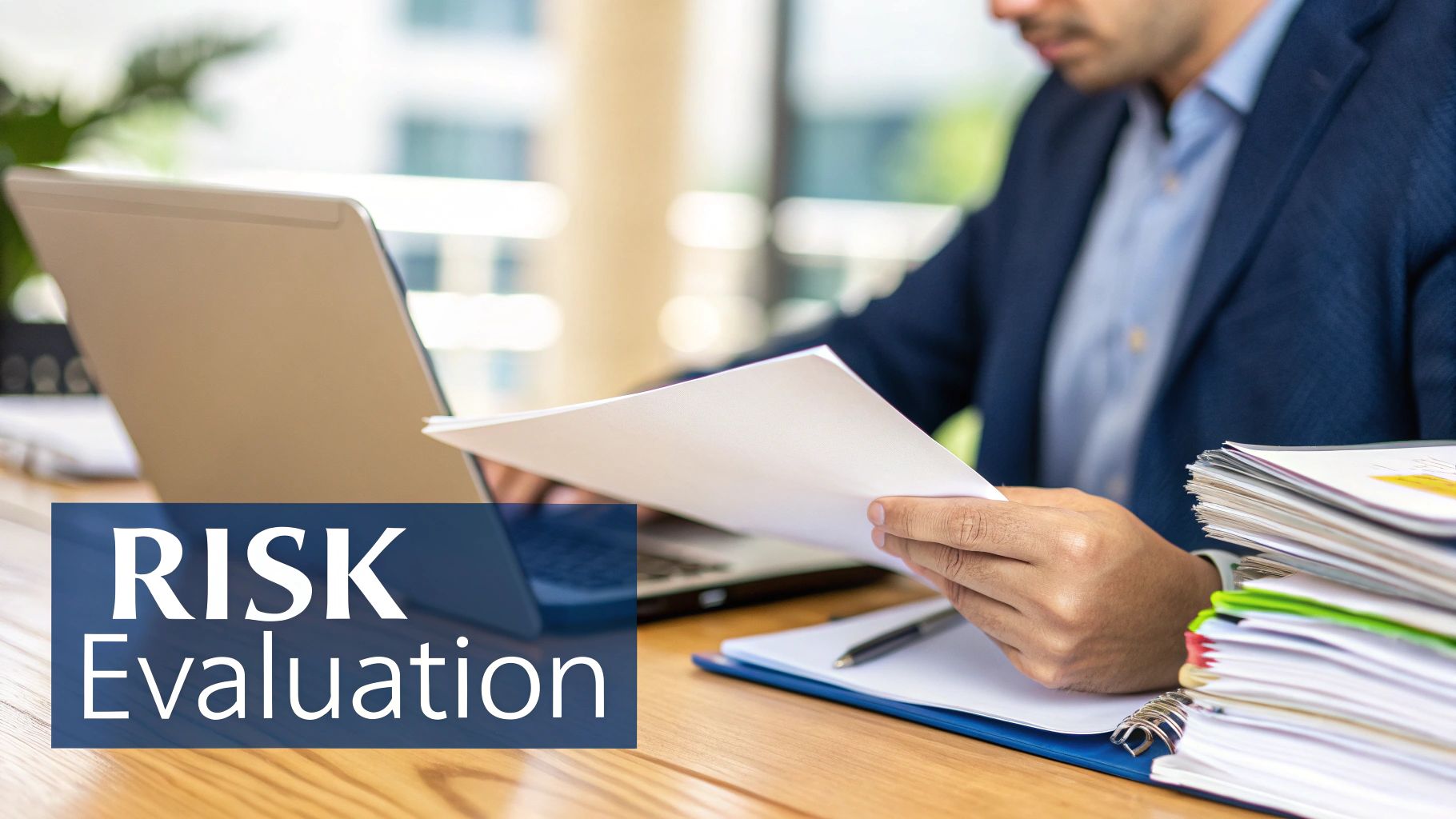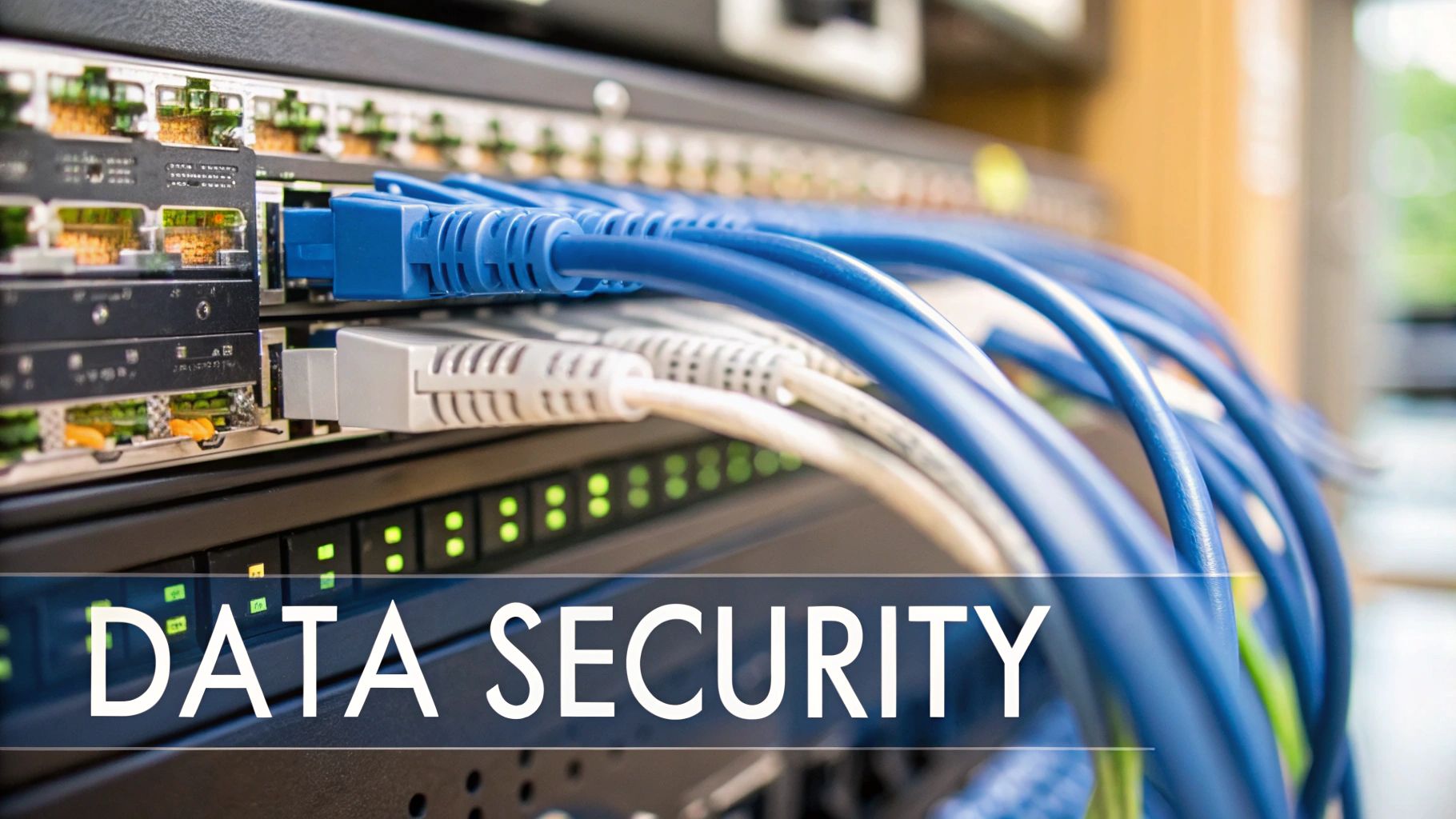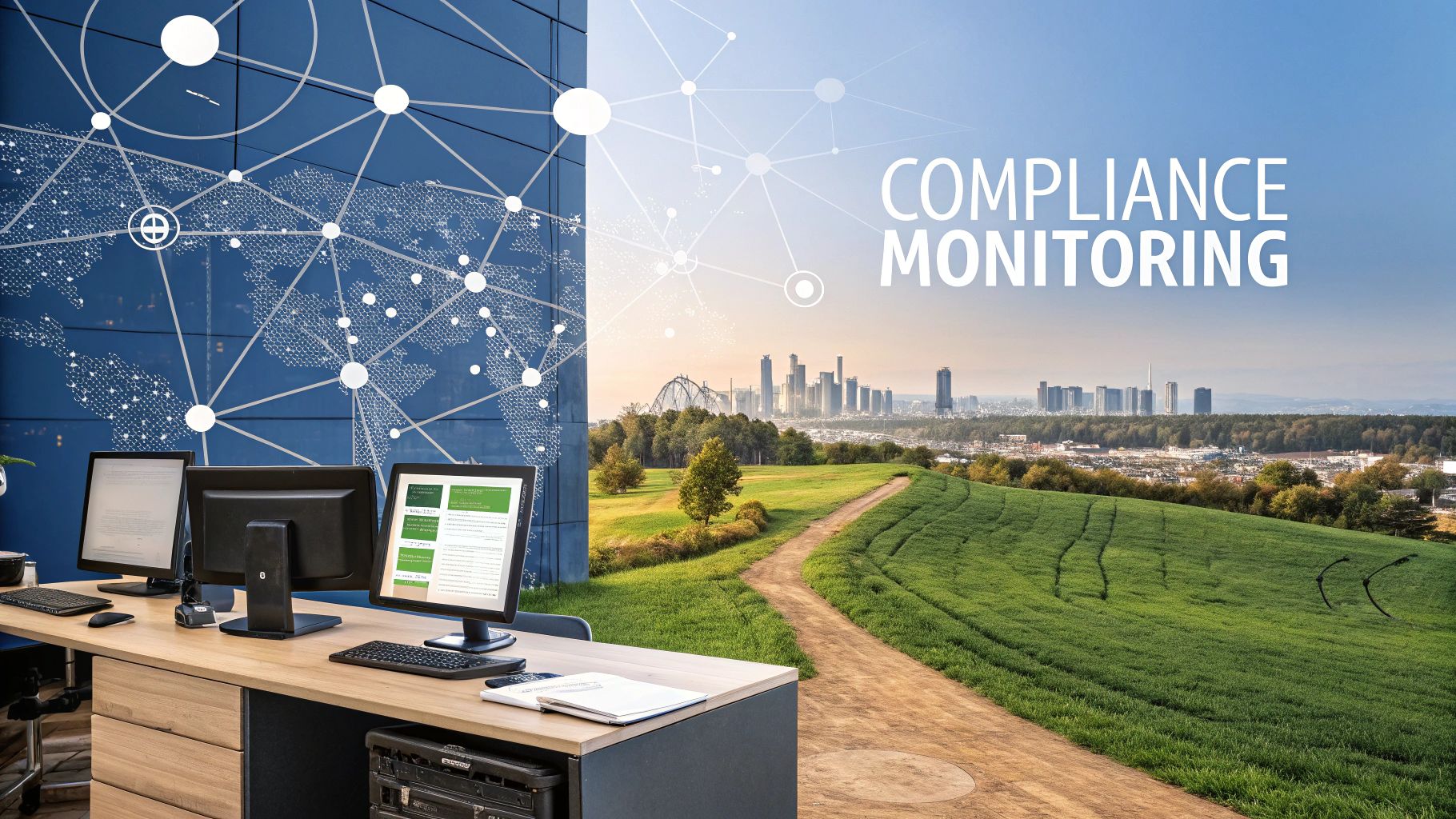The Complete Guide to Third Party Risk Assessment: Proven Strategies for Protecting Your Enterprise
Understanding the Critical Need for Third Party Risk Assessment

Most businesses depend heavily on external vendors for essential services like software, data storage, supply chains and customer support. While these partnerships offer clear advantages in expertise and cost savings, they also create significant security risks - a weakness in any vendor's system could expose your organization's sensitive data.
The interconnected nature of modern business means security issues can quickly spread. A breach at even a small vendor can affect hundreds of client organizations. Traditional security assessments often miss these cascading risks by focusing only on internal systems rather than the broader vendor network.
Managing vendor risk has become increasingly complex as organizations work with hundreds or thousands of third parties. Each vendor brings their own security practices and potential vulnerabilities. This expanded attack surface demands robust third party risk assessment processes that go far beyond basic compliance checklists.
Recent data highlights the urgency: 98% of organizations work with at least one vendor that has experienced a breach. In 2023, 61% of companies faced a third-party data breach, with incidents increasing 49% compared to the previous year and tripling since 2021. Learn more about these trends at Third-Party Risk Statistics.
The Hidden Costs of Inadequate Assessments
Poor vendor risk assessment can have severe consequences beyond direct financial losses. Organizations face damaged reputation, lost customer trust, operational disruptions, and legal exposure when third-party security fails.
Many companies believe their own strong security protects them while remaining exposed through vendor relationships. This makes thorough third party risk assessment essential for true security. For more guidance, see How to Master Data Protection Strategies.
Moving Beyond Checkbox Compliance
Leading organizations now take a proactive, continuous approach to vendor risk rather than relying on periodic checklist reviews. This requires thoroughly mapping the vendor ecosystem, implementing detailed assessment processes, and maintaining ongoing monitoring.
The shift recognizes that third party risk assessment must be a constant effort, not a one-time task. By adopting this more rigorous approach, companies can build stronger vendor relationships while better protecting themselves from third-party security incidents.
Building a Comprehensive Third Party Risk Framework

A solid third party risk assessment is essential for protecting your organization. This section explores how to create a practical framework that goes beyond basic compliance to address your specific needs and challenges.
Defining Risk Categories
Start by identifying the key risk areas that third parties pose to your organization. The main categories include:
- Cybersecurity Risks: Data breaches, malware infections, system vulnerabilities
- Compliance Risks: Violations of GDPR, HIPAA, or industry requirements
- Operational Risks: Business disruptions, supply chain issues, service outages
- Reputational Risks: Brand damage, customer trust impacts
- Financial Risks: Vendor bankruptcy, contract disputes, cost overruns
These categories help structure your assessments based on vendor type. For instance, a cloud storage provider needs different risk evaluations than a marketing agency.
Implementing a Scoring System
Create a clear method for measuring risk impact and probability. This could use a basic 1-5 scale or a detailed matrix. The scoring helps prioritize where to focus resources - a potential data breach at your payment processor deserves more attention than a brief delay from a non-critical vendor.
Establishing Governance Structures
Set up clear oversight roles and responsibilities:
- Risk Owners: People accountable for specific risk areas
- Assessment Teams: Staff who conduct vendor evaluations
- Oversight Committees: Groups that review findings and approve plans
Recent data shows room for improvement in most organizations: only one-third have well-coordinated third-party security programs. Less than one-third have run risk management programs for over 5 years, and just 39% rate their risk controls as highly effective. A mere 9% have fully mature capabilities. See more stats at Third-Party Risk Management Solutions Forecast.
Building a Scalable and Adaptable Framework
Your risk framework should grow with your organization. Key elements include:
- Automated Tools: Software for assessments, risk tracking, and reporting
- Continuous Monitoring: Real-time tracking of critical vendors and risks
- Feedback Loops: Regular input from stakeholders on improvements
With these components in place, you'll have a strong foundation for identifying, measuring and managing third party risks. This systematic approach helps protect your organization as you work with outside partners and vendors.
Essential Risk Assessment Methodologies and Tools

To go beyond basic vendor reviews, organizations need to understand the range of methods and tools available for conducting effective third party risk assessments. This section explores both proven approaches and modern solutions to help build strong assessment processes.
Traditional Assessment Approaches
These established methods provide important insights when used strategically:
- Vendor Questionnaires: Standard forms help gather basic security and compliance details, though they may miss deeper risks
- Documentation Reviews: Examining vendor policies, certifications (like ISO 27001 or SOC 2), and audit reports reveals their security stance
- Site Visits: In-person facility tours provide direct observation of operations and controls, offering rich data despite higher resource needs
- Interviews: Direct discussions with vendor staff allow deeper exploration of specific risk areas and company practices
While these methods remain valuable, especially when focused on particular risks, using them alone may leave gaps in risk visibility.
Using Technology for Better Insights
Modern technology platforms enhance traditional approaches by providing:
- Automated Scanning Tools: Quick technical security checks through system and network vulnerability scanning
- Risk Intelligence Platforms: Real-time risk insights by combining data from news, security databases, and social media
- Third-Party Risk Management Software: End-to-end platforms that streamline assessments from onboarding through monitoring
Picking the Right Mix
The most successful third party risk assessment programs combine traditional and technology methods. For instance, risk monitoring software might flag an issue that prompts targeted document review or vendor interviews. This balanced approach maximizes each method's strengths while using resources efficiently.
Practical Tips for Better Risk Visibility
Consider these techniques to strengthen your assessments:
- Better Questionnaires: Use open questions that encourage detailed responses, customized to each vendor type's risks
- Effective Site Visits: Create structured checklists focusing on key controls and risk areas
- Smart Tech Integration: Connect risk management software with procurement and contract systems to improve workflows and data quality
By combining proven methods with practical techniques and helpful technology, organizations can move from basic compliance checks to data-driven third party risk assessment. This builds a stronger vendor network and improves confidence in risk management capabilities.
Implementing Continuous Monitoring Strategies

Regular third party risk assessments can quickly become outdated as business conditions change. Organizations need ongoing monitoring to stay informed about vendor risks as they emerge and evolve. This proactive approach helps catch potential issues early.
Establishing Effective Monitoring Frequencies
Regular monitoring doesn't require constant oversight. Instead, focus on setting check-in schedules based on each vendor's importance and risk level. For example, critical vendors handling sensitive data may need monthly reviews, while low-risk vendors can be assessed yearly.
Smart scheduling helps use resources efficiently by concentrating efforts where they matter most. Adding automated alerts for specific events provides real-time awareness alongside scheduled reviews.
Identifying Meaningful Trigger Events
Certain events should prompt an immediate third party risk assessment, including:
- Security Incidents: Data breaches or cyberattacks affecting the vendor
- Compliance Issues: Failure to meet required regulations
- Major Business Changes: Mergers, acquisitions, or significant restructuring
- Reputational Problems: Public issues impacting vendor credibility
Having clear triggers helps organizations spot and address emerging risks quickly before they cause disruption.
Maintaining Useful Documentation
Assessment records should serve as active resources, not just historical archives. Keep documentation clear and accessible to support ongoing monitoring and future reviews.
Put procedures in place to update documentation when changes occur. This ensures information stays current and valuable for future third party risk assessments.
Building Effective Escalation Procedures
Create clear paths for escalating identified risks. Define who is responsible for escalation, establish communication channels, and set response timeframes.
Minor risks might be handled by vendor managers, while major issues need immediate senior management attention. Clear procedures prevent delays and confusion about who handles what.
Maintaining Stakeholder Communication
Open communication helps all stakeholders stay informed and aligned. Regular updates about risks, mitigation efforts and program status build trust and encourage teamwork.
This includes reporting to leadership, sharing updates with relevant teams, and maintaining vendor dialogue. Good communication ensures everyone understands potential risks and works together effectively to manage them, strengthening the overall third party risk assessment program.
Risk Mitigation and Remediation Planning
Conducting a third party risk assessment helps identify potential vulnerabilities in your vendor relationships. The real value comes from converting these findings into practical plans that minimize risk exposure. This requires careful prioritization, clear action steps, and consistent progress tracking.
Prioritizing Risks Based on Impact
Each risk carries different implications for your organization. The key is evaluating both the likelihood of occurrence and potential impact on operations. For example, a data processing vendor with inadequate security poses much greater risk than an office supplies vendor with minor compliance gaps.
Smart prioritization ensures you focus resources on the most critical risks first. This targeted approach delivers maximum risk reduction with efficient resource allocation.
Developing Effective Remediation Plans
After prioritizing risks, create remediation plans that vendors can readily implement. Make objectives specific, measurable, achievable, relevant, and time-bound (SMART). Instead of vague directives like "enhance security," specify requirements like implementing multi-factor authentication by a defined date.
Get vendors involved in planning to build commitment and confirm feasibility. A collaborative approach makes vendors more willing partners in security improvements.
Tracking Improvement Progress
Regular monitoring is essential for successful third party risk assessment. Schedule periodic check-ins to verify vendors are meeting milestones through documentation reviews, follow-up assessments, and progress reporting.
Active monitoring helps identify and address delays early. Maintaining consistent oversight demonstrates your commitment to vendors' security enhancements.
Collaboration and Contract Negotiation
Building strong vendor partnerships is crucial for effective third party risk management. Work together to find mutually beneficial solutions through contract updates, clear security requirements, and improvement plans.
Focus negotiations on shared goals that strengthen relationships while boosting security for all parties.
Measuring Remediation Effectiveness
Track concrete metrics to show the impact of your third party risk assessment program. Consider measurements like number of risks addressed, risk score improvements, and vendor compliance rates.
These data points validate program success and highlight areas needing refinement. For more insights on managing compliance, see: The Ultimate Guide to Compliance Management Solutions.
Maintaining Ongoing Compliance
Develop sustainable processes that ensure continued compliance without excess burden. Consider automation opportunities, streamlined reporting, and integration with existing workflows.
Keep compliance manageable and practical. When it fits naturally into vendor relationships, consistent and effective third party risk assessment becomes the norm.
Future-Proofing Your Third Party Risk Program
Running an effective third party risk program requires constant evolution and improvement. As organizations increasingly rely on vendors and partners, having robust assessment processes is essential for managing risk.
Adapting to the Changing Risk Landscape
The widespread adoption of cloud computing, IoT devices, and AI systems creates new security challenges that require specialized assessment approaches. These technologies expand potential vulnerabilities and introduce complex data privacy considerations. Traditional assessment methods must be updated to address factors like data location, access controls, and security monitoring.
Recent years have seen a wave of new data privacy regulations and compliance requirements worldwide. Keeping assessment frameworks aligned with these changes is vital for avoiding penalties and maintaining customer confidence. See our Essential Data Security Best Practices guide for guidance on adapting to regulatory shifts.
Scaling Your Program for Growth
As vendor networks expand, manual assessment processes become unsustainable. Third party risk management platforms can automate key tasks like:
- Vendor onboarding
- Questionnaire distribution
- Risk scoring and tracking
- Assessment scheduling
This automation allows teams to focus on strategic analysis and risk remediation. Building a scalable program also requires clear roles, standardized procedures, and robust reporting capabilities.
Implementing New Technologies Without Disruption
Adding new technologies to your risk program should be strategic and methodical. Key steps include:
- Identifying specific needs and challenges
- Evaluating solutions based on integration, usability and cost
- Starting with small pilot programs
- Expanding gradually based on results
- Training teams properly on new tools
Leveraging Program Maturity Models
Program maturity models provide frameworks for ongoing improvement. These models typically define maturity levels from basic/reactive to optimized/proactive risk management. Regular evaluation against maturity models helps:
- Track progress over time
- Identify improvement areas
- Demonstrate program value
- Stay aligned with best practices
Whisperit helps strengthen risk management by streamlining documentation, communication and reporting processes. Visit our site to learn how we can enhance your program's effectiveness while reducing manual effort.